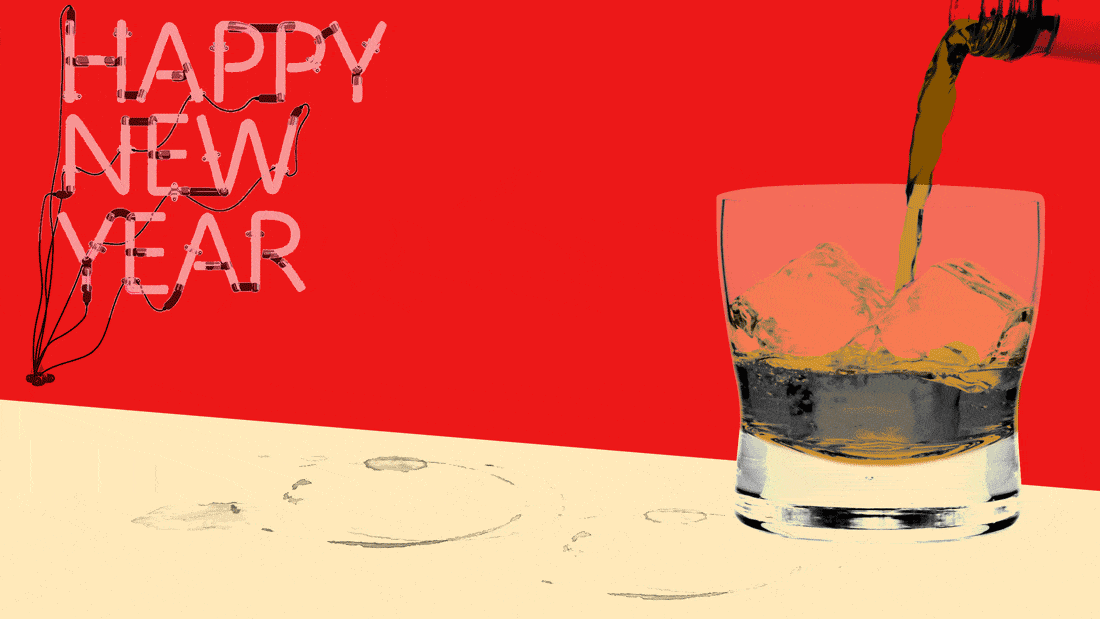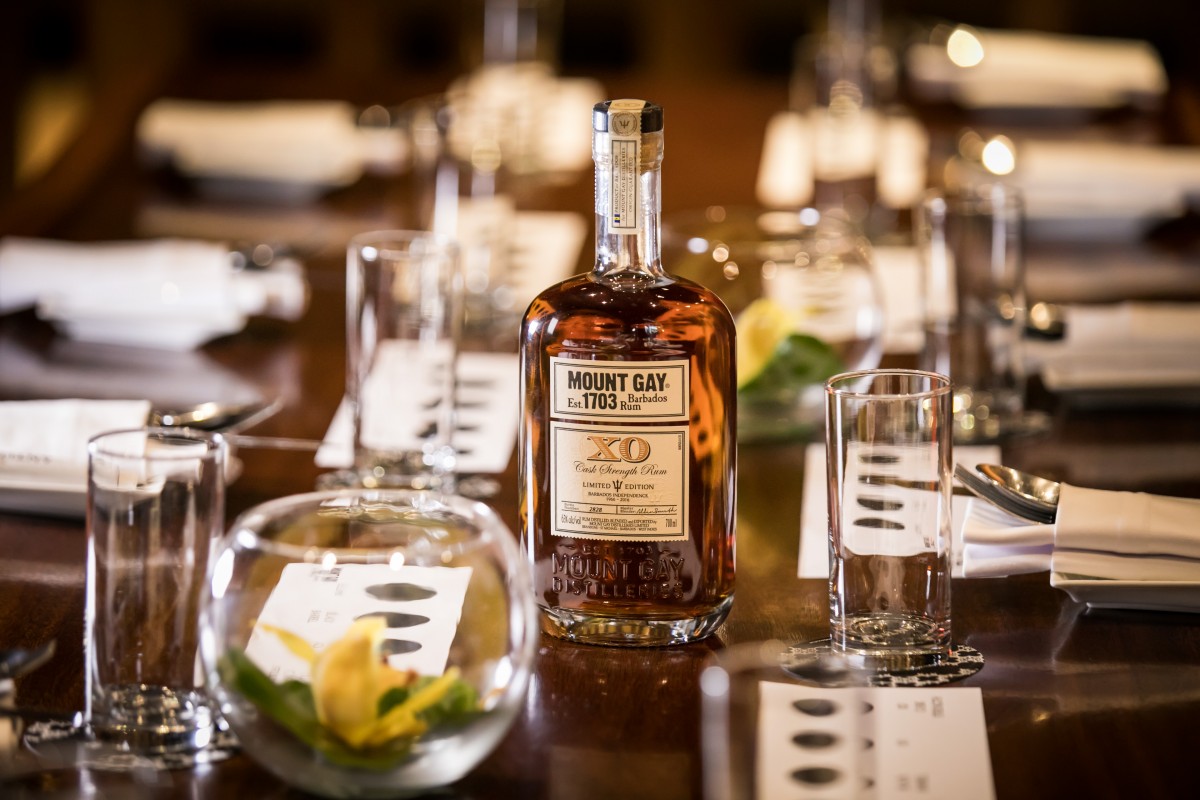
#570
WHAT YOU'LL BE DRINKING IN 2018
02 Jan 2018 By David Fuhrmann-Lim
From More Limited-Edition Whiskies and Farm-to-Grain Spirits, Find Out What Liquor Will Be Popular This Coming Year.
Drinking in 2018 By Wayne Curtis
Whew! Well, that was a hell of a year. Since November 2016 there’s been so much disruption and turmoil and crass disregard for the old ways of doing things!
I speak, of course, of the spirits world. Among the tumult: Sazerac Co., bought failing Southern Comfort and put whiskey back into it. Foreign Armagnac and mezcal were suddenly in bars everywhere. And craft distilling—whatever that is—got even harder to figure out after high-profile big guys acquired a raft of pioneering small-guy spirits, including Aviation Gin, Westland Whiskey, Smooth Ambler Spirits, and Tuthilltown Spirits.
Drinkers sitting at their favorite corner bar and drinking their usual tipples have remained calm and collected amid the turmoil, in large part because in all likelihood they didn’t notice much change—the roiling has mostly affected the hyper-tense spirits foragers, those people always scanning the horizon and watching for what’s new. But some of these shifts are likely to trickle down to the corner bar before long.
So what does 2018 portend? My crystal ball isn’t very clear—I prefer brown spirits—but here are some things to look for in liquor as the year stumbles onward.
MORE CULT RELEASES
A staple of the craft beer world are photos of long lines of customers in sub-freezing temperatures awaiting a limited release of some ultra-hoppy Javanese-style IPA or the like. That minor mania is migrating to craft spirits, with committed sippers increasingly abasing themselves by waiting in lines for limited-release products, such as Stranahan’s Colorado Snowflake Whiskey, High Wire’s Jimmy Red Bourbon, and Privateer Rum’s Queen Share.
But here’s the thing: Limited releases often live up to the hype, as well as show the distiller’s commitment to trying new things on a tiny scale—which is increasingly what distinguishes them from the major distillers.
Expect more such releases. These are not only good for publicity and to generate demand for a brand’s other products, but drive people to the distillery to buy bottles direct from the producer, which avoids the distribution chain, and thereby puts more money into the distiller’s pocket. Think of it as “farmstand spirits”—the place where you can turn up the spirituous equivalent of rare heirloom apples.

[ Check Out This Limited Edition Mount Gay XO Cask Strength Rum ]
HEIGHTENED WHISKEY GRAIN GEEKERY
Just when you thought it was enough to know what grains were in your whiskey, the obsessed are taking a step to the next level. Not only will craft producers let you know the proportions of corn, barley, wheat or rye in each batch, but also where that grain was grown.
So, is this just marketing—like your local farm-to-table restaurant menu informing you that your eggs were laid by a chicken named Phoebe? Maybe a little bit. But some recent fascinating spirits have cropped up based on experiments starting at the farm. Wigle Whiskey in Pittsburgh, for one, ran four batches of rye from different farms in four regions. The result produced whiskey samples that not only varied in taste, but in their chemical analysis. It turns out, Pennsylvania rye whiskey may actually be different than other rye. Even some of the bigger producers—like Buffalo Trace, which acquired a farm adjacent to its Kentucky distillery to experiment with heritage corn—are getting into the act. Watch for other variations as distillers increasingly tout terroir.

Drinking in 2018
BARRELS MOVE TO CENTER STAGE
Barrel-finishing has spread farther and wider, and will continue to do so. Putting a traditionally aged product for a few months in a barrel formerly used for something else is a way for craft distillers to produce experimental limited releases (see above), as well as to create more distance between them and bigger guys, who can’t dabble in small amounts as easily. WhistlePig Rye in Vermont has been getting traction with its annual Boss Hog series (“Black Prince,” for instance, is finished in Armagnac casks), and many distillers are playing around with uncommon barrels to add nuance to their flavors. Dad’s Hat in Pennsylvania uses casks that contained honey or maple syrup; Long Table Distillery in Vancouver, B.C., ages aquavit in rye barrels.
Some of these experiments work, some don’t. But it’s a welcome way to add more crayons to the Crayola set when drawing up a new spirit. Get your tasting glasses ready.
SPIRITS MOVE FROM SUBCULTURE TO POP CULTURE
Last fall it was announced that NBC-TV had commissioned a new comedy series called Sour Mash and set in a distillery. That’s a major shift—the advertising of liquor on TV was essentially banned for nearly half a century, until 1996, and industry codes discouraged the depiction of anyone drinking on camera.
It also opens the door to more “fictional spirits” on liquor store shelves as producers seize the opportunity to rise above the clutter by producing real products affiliated with fake people. This isn’t new—2014 brought us J.R. Ewing’s Bourbon, based on an odious character in the Dallas series, a whiskey “originally distilled to be his private stash.” Tequila Avión was made famous from frequent cameos on the HBO series Entourage.
[ Here’s What You Should Know About Premium Tequila ]
But with the noise in the spirits world rising, more will look to hitch their wagon to popular culture to get above it all. The British period crime series Peaky Blinders premiered in 2013, with new seasons signed up through 2019. Just recently Sadler’s Brewery announced a line of spirits—spiced rum, gin, Irish whiskey—“inspired” by the show, and rolled out in conjunction with the current year’s installments. In short: expect the “Orange is the New Black Curaçao.”
RISE OF REGIONAL COLLABORATIONS
Regionalism won’t only take the form of locally-grown grains and farm-to-bottle products, but cross-pollination between distillers, bars, breweries, wineries, and coffee roasteries.
Craft brewers have long embraced collaborative projects. But that’s now hurtling across categories. Copper & Kings distillery in Louisville, for instance, has a line called Cr&ftwerk that involves aging its brandy in barrels formerly used by brewers, a move “inspired by the imagination and fearlessness of America’s Craft Brewers.” Wiggly Bridge in Maine has been working with a local coffee roaster to age fresh beans in used bourbon barrels. Cardinal Spirits in Indiana teamed up with nearby Upland Brewing Co. to produce Black Bear Bierschnaps.
Regional collaborations make sense. It’s a way for local producers to join hands and raise the profile of all their products, allowing them to makes some noise in an environment otherwise dominated by the big-ticket ad purchases of the major distillers. Expect more of this in the coming year.

Drinking in 2018: Photo illustration © Elizabeth Brockway
THE RETURN OF THE ERA OF GREAT WHISKEY
The new golden age of whiskey will be dated to this year, or maybe next. But I suspect the keening and lamentation of those unable to get the once-abundant 12-year old versions of Weller, Elijah Craig or Yamazaki whiskies will start to abate in 2018. Aged whiskey in general and bourbon in particular has seen demand outpace supply—few predicted a boom a decade ago, and supplies are coming up short, and the longer-aged products are disappearing as the barrels are tapped earlier to meet the current demand.
Yet, major distillers have started to ramp up—Bulleit opened it $117 million new Kentucky distillery in March, Heaven Hill wrapped up a $25 million expansion at the Bernheim Distillery last fall, and Buffalo Trace has invested $200 million in an expansion, including lots of new warehouses to lay down stock. All this will reduce the pressure on the aging stock in the next couple of years, allowing the pipeline to refill. We might start to see some benefits as early as late this year, as distillers with foresight started this process a few years ago.
What’s more, many of the hundreds of new craft distillers making whiskey have finished the apprentice stage of their early years and are getting more serious. That means better technique, and a better understanding that they need to respect time in the barrel. Those that had the means will be soon releasing some high-quality whiskey aged properly that thankfully is missing that “new craft spirit smell.” The recent reduction in federal excise tax for all distillers will also free up some cash to allow even more whiskey to be socked away for the future.
Pay attention. Your grandkids yet unborn will one day want to know what it was like to live in the golden age of whiskey. Here’s to 2018!
Like this? Here’s a Random List of 263 Bars to Drink At
Like this? Here Are Some Serious Spirits to Bid For

You might be interested in...
DRINK THIS: 2024 TSUKURIWAKE SERIES
The Combo of Suntory’s Tsukuriwake Series 2024 and Takayama’s Elevated Omakase is a Pairing Made in an Aesthete’s Heaven.
DRINK HERE: SYZYGY
It's Weird That No One Thought of This Before: A Bar Specialising in The ABCs of Fruit-Based Spirits — Armagnac, Brandy, Calvados. Well, Someone Has Now, And We Are Embracing SyZyGy.
GRAIN & GRAPE
Auchentoshan Breaks New Terroir With Their Limited Edition Sauvignon Blanc-finished Expression
DRINK THIS: 2024 TSUKURIWAKE SERIES
DRINK HERE: SYZYGY
GRAIN & GRAPE